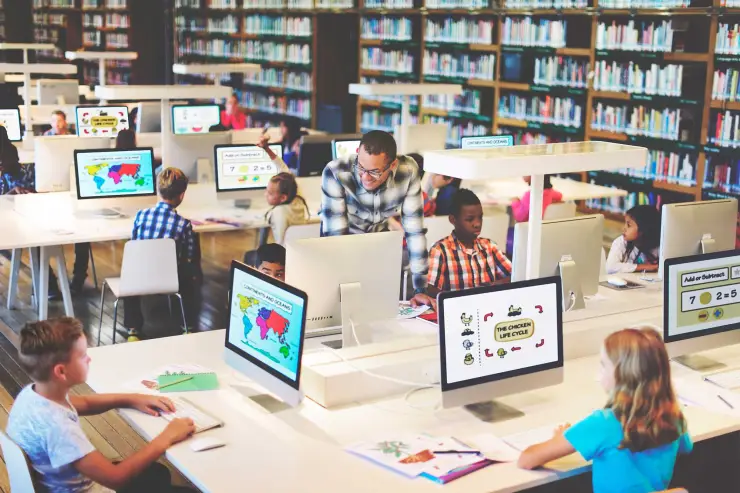Inclusivity in education is not just about ensuring equal access to learning; it is about empowering every student, regardless of their background, abilities, or personal circumstances. The idea behind inclusive education is simple: to create environments where every individual feels valued, supported, and capable slot bet 400 of achieving their potential. When implemented correctly, inclusivity fosters a sense of belonging, promotes diversity, and leads to better academic, social, and emotional outcomes for all students.
What is Inclusivity in Education?
Inclusivity in education refers to the practice of designing learning experiences, environments, and policies that accommodate students from diverse backgrounds, including those with disabilities, students from marginalized groups, and those who may face social or economic barriers. It involves removing obstacles to learning, addressing individual needs, and creating a supportive atmosphere where every student has the opportunity to thrive. Inclusivity is not merely about physical access but about ensuring that each student’s voice is heard, respected, and considered.
The Benefits of Inclusive Education
Inclusive education offers a wide range of benefits, not just for students who may have been previously marginalized, but for all learners. Here are a few key benefits of creating an inclusive learning environment:
1. Enhanced Diversity and Social Skills
In inclusive classrooms, students from different backgrounds—whether cultural, socioeconomic, or ability-based—learn together. This diversity creates opportunities for students to interact with peers who have different perspectives, fostering empathy, tolerance, and understanding. Exposure to diversity in learning settings equips students with essential social skills needed in the real world, where collaboration with people of varied backgrounds is the norm.
2. Improved Academic Outcomes for All
Research has shown that inclusive education leads to improved academic outcomes for all students, not just those with special needs or from disadvantaged backgrounds. In inclusive environments, students learn to work collaboratively, think critically, and solve problems together, skills that are invaluable both in academics and in life. The diverse learning strategies employed in these settings also benefit everyone, as students are exposed to a variety of teaching methods and perspectives.
3. Promotes Equity and Social Justice
Inclusivity is closely tied to principles of equity and social justice. By ensuring that all students have access to quality education and resources, inclusive education helps bridge the gap between different social groups, reducing inequalities in education. This leads to a more fair and just educational system where every student has the same opportunities for success, regardless of their background.
4. Fosters Personal Growth and Self-Confidence
Inclusive classrooms help students develop a strong sense of self-worth and confidence. When students are made to feel valued and accepted, their self-esteem increases. This feeling of acceptance motivates them to take risks, engage more actively in learning, and participate in extracurricular activities. Students are more likely to succeed when they believe in their ability to achieve their goals, and an inclusive environment fosters this mindset.
5. Supports Lifelong Learning and Development
The skills gained in an inclusive classroom—such as adaptability, teamwork, and communication—are not just useful in the context of school but extend into adulthood. Students who experience inclusivity learn to navigate a variety of social situations, work with diverse teams, and appreciate the value of different viewpoints. These skills contribute to lifelong learning and personal growth, preparing students for success in their careers and communities.
Key Strategies for Fostering Inclusivity in Education
Creating an inclusive learning environment requires intentional effort and planning. Here are a few strategies that can help educators build a more inclusive classroom:
1. Differentiated Instruction
One of the most effective ways to support inclusivity in the classroom is by adopting differentiated instruction. This approach involves tailoring teaching methods, materials, and assessments to accommodate the diverse learning needs of all students. By providing multiple pathways for learning, educators can ensure that every student, regardless of their ability or learning style, can engage with the content and succeed.
2. Universal Design for Learning (UDL)
Universal Design for Learning (UDL) is a framework that focuses on providing multiple means of engagement, representation, and expression. By implementing UDL, teachers can design lessons and activities that are accessible to a wide range of learners, ensuring that all students have the opportunity to participate and learn in ways that work best for them.
3. Collaborative Learning
Collaborative learning encourages students to work together in diverse groups to solve problems, complete tasks, and share knowledge. By working in groups with classmates from different backgrounds and abilities, students develop valuable teamwork skills and learn to appreciate different perspectives. Collaborative learning fosters cooperation and mutual respect, which are essential in an inclusive educational setting.
4. Promote Positive Behavior and Respect
Creating an inclusive classroom also involves promoting a culture of respect and positive behavior. Teachers should model inclusive language, promote respect for differences, and intervene if discriminatory behavior arises. By setting clear expectations for how students should treat one another, educators help create an environment where all students feel safe, respected, and valued.
5. Provide Support Systems and Resources
For students with specific needs, it is important to provide tailored support systems, such as special education services, counseling, and access to resources like adaptive technologies. These resources ensure that all students can participate fully in the learning process and have the tools they need to succeed. Providing access to mental health support is also crucial in creating an inclusive environment where students feel comfortable and supported.
Overcoming Challenges in Inclusive Education
Despite its many benefits, implementing inclusive education can come with challenges. These may include resistance from educators who are unfamiliar with inclusive practices, a lack of resources or training, and societal or cultural barriers to inclusion. Overcoming these challenges requires commitment from educational leaders, teachers, and policymakers to invest in professional development, provide the necessary resources, and create policies that promote inclusivity at every level of the education system
Inclusivity in education is a powerful tool for empowering students and fostering a learning environment that promotes academic excellence, personal growth, and social development. By creating spaces where every student feels valued and supported, educators can ensure that all students have the opportunity to reach their full potential. When inclusivity is embraced, it not only benefits individuals but strengthens the entire educational community, paving the way for a more just and equitable society.





